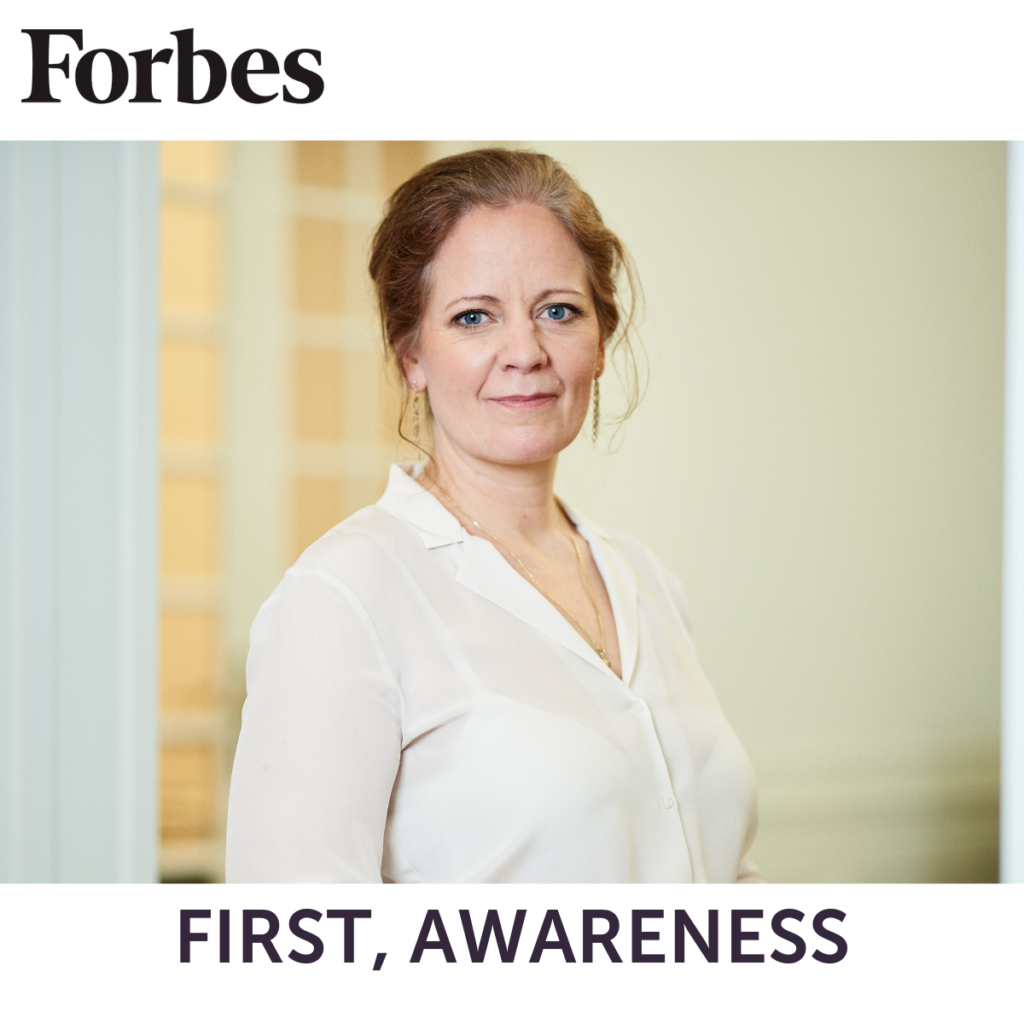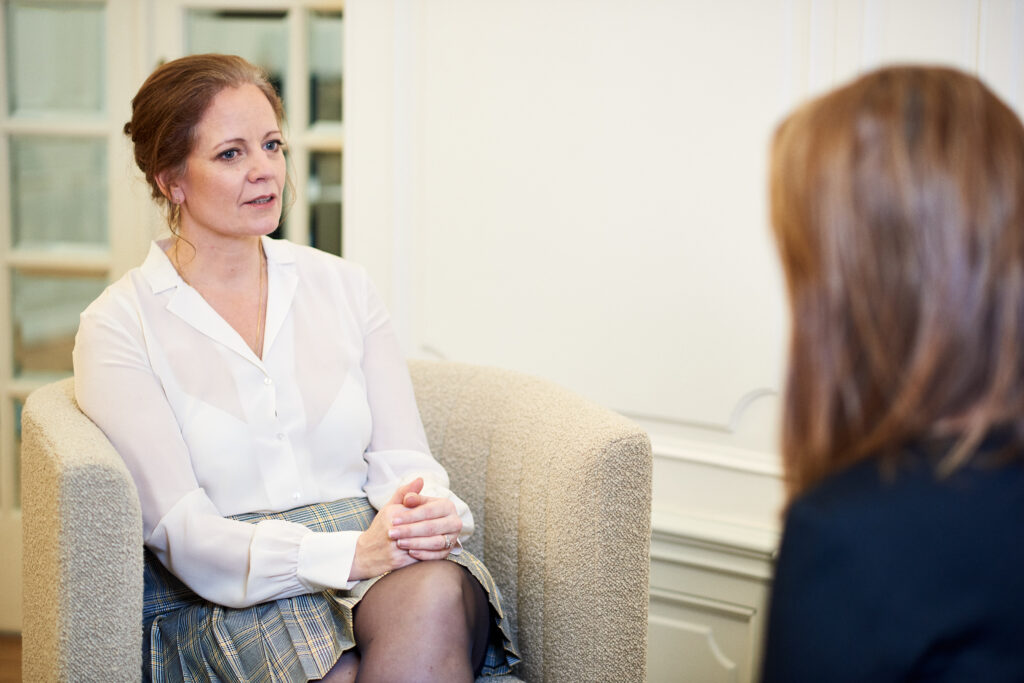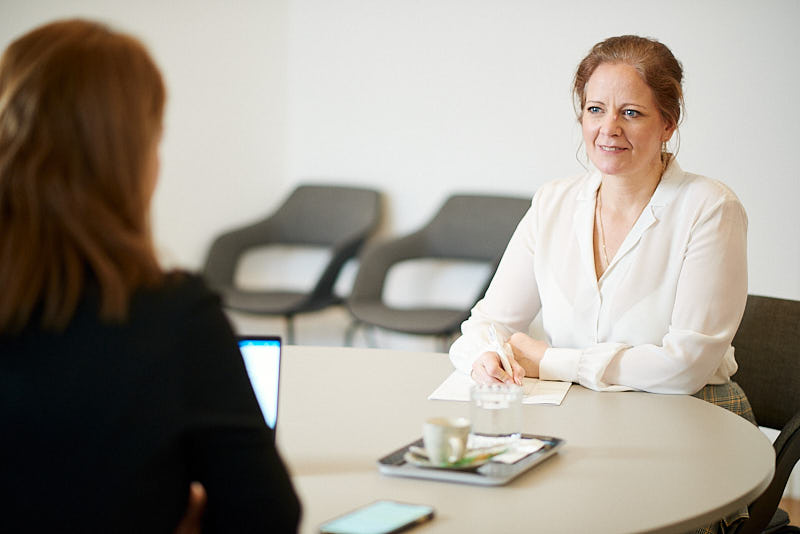Am absolutely honoured to be noticed by, interviewed by and presented in Forbes.
An event, I never planned for, nor dared to dream about. And something that proved to me all over again, that if you do what you do with great passion, then even the seemingly impossible becomes possible …
This below article was originally published in Forbes on March 24th, 2022 and is also accessible here
Text by Ekin Deniz Dere

How can the first turnover phase be structured and implemented for a company that has been unprofitable for over a decade? Are flat organizations better than hierarchical ones? What are the driving forces behind peoples’ decisions? Mae Leyrer, executive confidant, has been tackling a whole array of questions around human nature and is now on a mission to help executives improve their decision making.

“A crisis is nothing but an opportunity, if you know how to use it.”
Mae Leyrer
Leyrer mentions that decision making has always been the most fascinating element in leadership. Since the beginning of 2021, she has been utilizing her experience to offer coaching, advisory and mentoring services to companies with focus on helping to improve decision-making. “The higher you climb on the executive ladder, the more alone you are,” she explains, “and all the way on the top you are completely by yourself.” Of course, leaders get some support from their team, but part of the loneliness is hidden in how the system is built up. Leaders do not always have the opportunity to talk to their team. “To remain a leader, you cannot go and ask your team to help with every key decision you have to make. Then you are not a leader anymore.” The cost is a loss of authority. And in crises, it is even more important that the leader shows the capability to make and execute decisions. This is when leaders are truly left all alone. That is one reason why Leyrer has been concentrating on helping executives with an executive confidant approach.
Would it not be more efficient for the companies if the executives got rid of some of the decision-making responsibilities, and if those were distributed throughout the organization? According to Leyrer, not always. To some extent, a flat organizational structure works, but as the company grows it is getting less efficient and a hierarchy is usually formed because it cannot be expected that all employees are strategic thinkers nor best informed. “But that doesn’t mean one can’t get insights from the employees. You always need different views.” Leyrer puts the organizational structure question into a broader, societal context saying, “People need leaders, managers, they need someone to let them know what the goal is and someone to lead. It is so, because we are human, and our nature is to look for others to find meaning.” A society in which a hundred percent of the people are independent, know what they want, and will go and achieve it, is simply not feasible. “That’s why you can’t have a hundred percent flat organization. Even a leader needs a leader sometimes!” explains Leyrer, giving start-ups as an example. All start-ups start flat but once the company starts growing, it changes. Leyrer remarks that democracy will not work for corporate decision-making. “If you have full democracy, your company will die out because you become very slow in decision-making,” she claims. Leyrer talks about the other importance of flexibility and quick decision-making in terms of adaptability: “As a leader in today’s world, where thousands of companies are founded every year and one crisis chases another, you need to be very quick in adapting to new circumstances. This, on the other hand, can’t be achieved with slow decision-making.” If organizations start making their decisions democratically, they stumble upon the problem of unevenly distributed information and motivation as well as limited ability to understand strategic decisions. Taking the example of Brexit in the UK, Leyrer asks how people could vote on something they did not truly understand. The majority of the decision-makers in that instance did not understand how the financial system is correlated with the global economy or how trade restrictions impact their own salary. The knowledge of masses comes from the selection of information that someone decides to pass on to them, and so we find ourselves in the realm of fully biased decision-making. “There is no right or wrong decision, yet there are better and worse decisions in every situation,” Leyrer says, “and over decades I’ve developed and used a framework on how to make better decisions.”

Mae Leyrer has more than 20 years of international leadership experience. Among others, she was CEO of Finance Estonia, advisor to the board of Opus Capita and interim Group CEO of Baltika Group. Since early 2021, she has been deploying her experience to coach companies on improving their decision-making, communication and resolving deadlock situations.
What are common decisionmaking pitfalls that executives face? According to Leyrer, the most important ones are not being able to look beyond one’s own hidden agendas, the inability to communicate the decision in a transparent and clear way, and the biggest issue is that a decision is made prior to truly understanding which problem it should help to resolve. “In such situations instead of solving a problem, one is creating a new one without any remedy to the original issue.” One example on the power of right communication comes from Leyrer’s time with the Baltika Group where she had to lay off 50% of the employees. Afterwards, something surprising happened–she was elected as the Leader of the Year by the remaining 50%. How? “Because they understood why that decision needed to be made, and they realized it is the best decision in the given situation,” she replies. This, according to Leyrer, is a direct consequence of efficient communication. Nevertheless, the key to leadership success is personal awareness, which according to Leyrer, has also a great impact on the decision-making ability: “The best leaders and best decision-makers are the ones who understand who they are and why they do things the way they do,” she concludes.